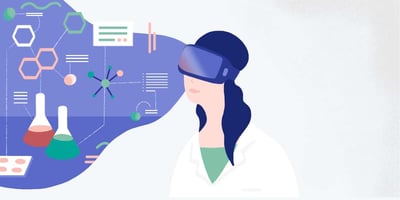What is the lab of the future and do we really need it?
Now consider a nightmarish scenario out of a science fiction movie – a rapidly spreading global pandemic, caused by a highly infectious micro-organism, with no known treatment and little respect for age, gender, or international boundaries! Unfortunately for the world today, this is no longer fiction as the world battles the newly discovered coronavirus (SARS-COV2). As healthcare systems around the world scramble to play catch up with coronavirus disease 2019 (COVID-19), never before has it been more critical that scientists expeditiously develop effective diagnostic tests and therapies for this disease.
While human intellect and innovation will undoubtedly drive scientific research in crisis situations like these, it is essential that scientists and physicians be supported by laboratory technologies that aid in maintaining accuracy and reproducibility of research findings. It is also important to recognize an increased need for collaboration and data sharing all over the world. By considering the complexity associated with these features, one can design a modern laboratory that seamlessly integrates the most recent advances in engineering and technology. Enter the smart lab of the future!
Over the past decade, the life sciences ecosystem has seen massive data explosion coupled with and spurred by rapid technological evolution. Today, we are witnessing an unprecedented level of lab automation andlab digitization in the research setting along with an ever-increasing computational power. Development and refining of the voice-powered digital assistant is a promising new frontier in this space. Though some of these developments may have sounded like science fiction only a few years ago, these rapid changes are poised to change the face of the laboratory, as scientists know it today.
Automated technologies have been utilized in research for a long time, driven initially in large part by drug discovery to enhance throughput. However, in spite of new technologies being developed every day, there remains a disconnect between biomedical research tools and truly integrative technologies. There are areas in the research laboratory that continue to be bottlenecks in the process of lab automation, lab informatics, and lab digitization. The lack of accounting for the needs of the end user (aka scientist) remains one of the main reasons for slow or ineffective adoption of newer technologies in life science laboratories.
The key to transitioning to a modern, smart laboratory of the future is by addressing the myriad issues leading to bottlenecks, primary among which is placing scientists at the centre of innovation. This empathic innovation or user-centred design will allow life science companies to develop and seamlessly integrate new technologies. Empathic innovation will be key to incorporating instrumentation, automation, and communication systems in the smart lab of the future.











